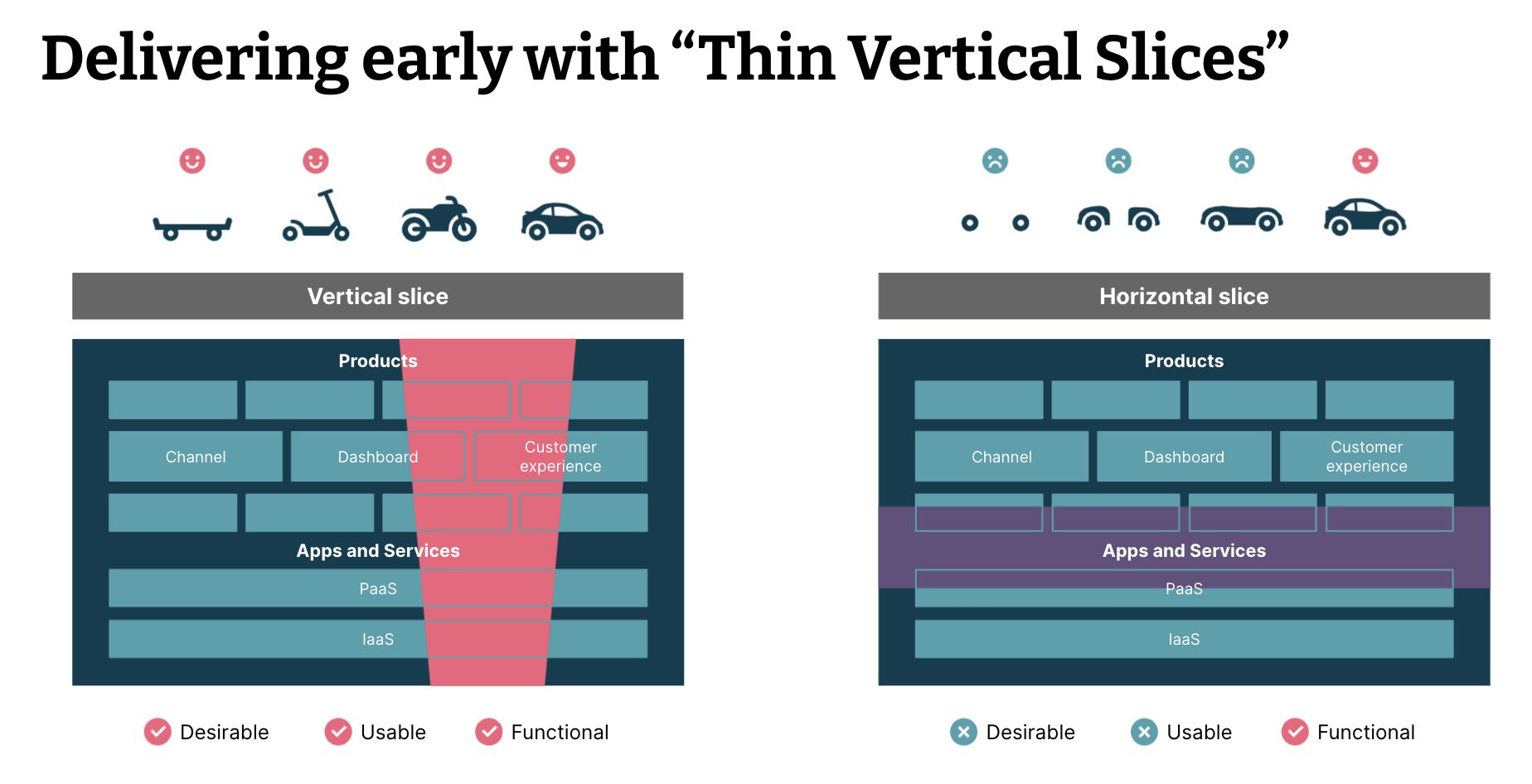Having a modern data strategy and roadmap can help determine where you’re heading. The real challenge is knowing how and where to start.
It may feel intuitive to start delivering the roadmap by breaking down work along the functional layers of a technical solution. However, this approach can have associated opportunity costs: long feedback loops, inability to test end-to-end till the very end of the build, and creating silos of knowledge. Furthermore, by being platform focused, we’re giving up the ability to realize the benefits of assessing our data faster and delivering customer value iteratively. As a result, we may miss an opportunity to truly solve customer problems.
So how else might we slice data work differently?
It’s possible to apply principles of lean product development to data themed initiatives too, starting by describing the data product we’re building and defining ‘thin slices’ of value.


Even then, a ‘thin slice’ of value can still be too large to build incrementally, and crucially, be responsive for the unexpected chopping and changing that is naturally part of the delivery process. This is when we can apply the principles of writing good user stories:
Following the INVEST principle.
Keeping the user/end customer in mind by including: “As a…. I want to… so that I…".
Being flexible in applying different slicing techniques, i.e. by data types, data flow, customer segment, decision type, reporting type.
Writing effective and tightly scoped acceptance criteria.
There is no hard and fast rule to know when to use which method. However, by tracing a ‘thin slice’ of value through components of a data ecosystem, and delivering work in user stories and tasks, there’s a higher chance we are able to operationalize data assets faster. This means not only can we test and learn in a more cost effective way, we can solve customer problems in a more effective data driven way, and ultimately, deliver value sooner.
Disclaimer: The statements and opinions expressed in this article are those of the author(s) and do not necessarily reflect the positions of Thoughtworks.


















